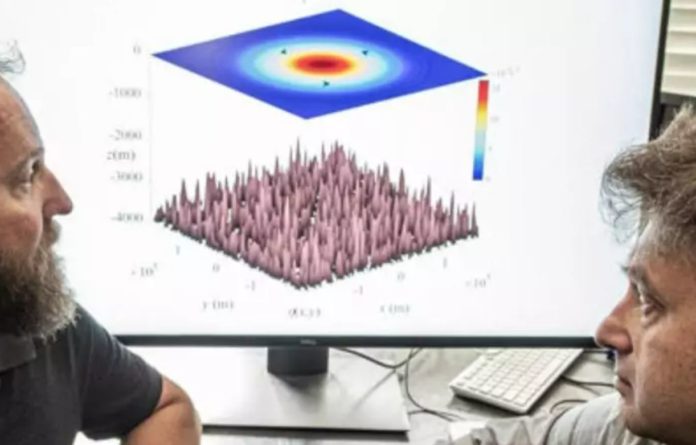“Let’s get to the bottom of it” with this new study published in the latest edition of the journal “Geophysical Research Letters.
The ocean is a fascinating mystery. Since the first ocean-going boat entered its intricate waters, humans have attempted to comprehend its myriad activities.
How swirls of circular currents numerous kilometers wide, known as ocean rings or eddies, stay unbroken has perplexed scientists for years.
Ocean rings, which can span anywhere from a few months to several years, are vital for moving heat and nutrients across the ocean.
According to the most recent issue of “Geophysical Research Letters,” it appears that Naval Postgraduate School (NPS) Department of Oceanography doctoral student Larry Gulliver and Professor Timour Radko have solved the riddle of what causes some ocean rings to persist for up to a decade while others dissipate in a matter of months: seafloor topography.
This new information about how the ocean floor affects surface currents will help the Navy’s meteorology and oceanography (METOC) community improve the complicated numerical models they use to give important information to operational commanders.
“We need to remove systematic biases that numerical models have,” Radko says, “and some of those are linked to the way models handle small-scale bottom topography.”
Eddies have the ability to form their own weather and wave patterns, as well as have an effect on acoustics.
The “sandpaper effect,” as Radko and Gulliver call their discovery, is named after the small abrasive particles of sandpaper that can grind down much bigger things. Similarly, the seafloor’s small-scale texture slows currents toward the ocean’s bottom, improving the stability and lifespan of ocean rings near the top.
For over 50 years, scientists have been attempting to figure out what makes big vortices stable and long-lived, but no one thought to look at the small-scale topography of the ocean floor since it seemed too far away to have an impact on these ocean rings. When theoreticians look at surface water behavior, topographic roughness is usually overlooked.
Radko confesses, “Now I have doubts [about current models]. If this small-scale topography affects this vortex, it may affect currents, waves, and what not. I’m becoming skeptical of everything that assumes the bottom is smooth.”
Ocean rings should fade in a few weeks without accounting for small-scale topography, according to physics. Old papers that didn’t account for the bottom roughness in their models proved this.
The NPS researchers discovered that making topography as accurate as possible is the key to creating the “perfect model.” They used an actual echo-sounding system’s statistical depiction of bottom roughness.
Oceanographers may not be able to measure every element of the ocean’s bottom relief in the near future, but they do have a decent understanding of its statistical features. The Gulliver and Radko study’s bottom roughness model mathematically describes what an average seafloor looks like.
“We borrowed this, borrowed that, borrowed the other idea, put it together and it worked!” Gulliver asserts.
He and Radko are still laughing about how surprised they were.
“It was pretty quick, [but] I had to run a few more simulations to make sure.”
The researchers may have described their big discovery as simple and quick, but it was far from that. Four years of intensive research, five additional institutions’ cooperation, a wide range of research questions and modeling approaches…
Finally, other models corroborated the duo’s work, indicating that small-scale topography was indeed the missing ingredient to unlocking eddy lifespan. Their discovery adds another piece to the complicated puzzle of knowing how the water operates for researchers and Navy METOC personnel.
Gulliver expects to finish his doctorate in December, while Radko intends to work with the Naval Research Laboratory (NRL) to examine how the Navy’s Hybrid Coordinate Ocean Model (HYCOM) displays eddies. He is optimistic that their research will aid in improving the model’s accuracy.
“Let’s get to the bottom of it,” Radko says.
Image Credit: Getty
You were reading: Scientists Have Finally Figured Out What Makes Eddies Stable – New Research
